You have no items in your shopping cart.
Always Here for You.
Lighting Warehouse offers direct support to customers. We always have your back.
SHOP BY LW BRAND
SHOP CATALOG
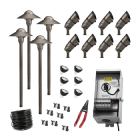 Easy-Install Kits
Easy-Install Kits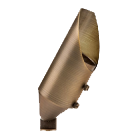 Uplights
Uplights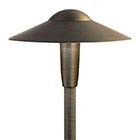 Path & Walkway Lights
Path & Walkway Lights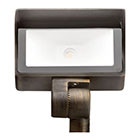 Flood & Wall Wash Lights
Flood & Wall Wash Lights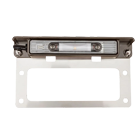 Hardscape Lights
Hardscape Lights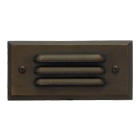 Step Lights
Step Lights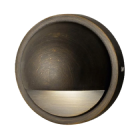 Outdoor Deck Lights
Outdoor Deck Lights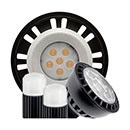 Outdoor Bulbs
Outdoor Bulbs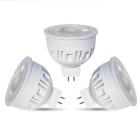 RGBW Color Lights
RGBW Color Lights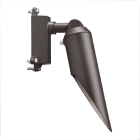 Downlights
Downlights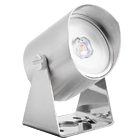 Underwater Lights
Underwater Lights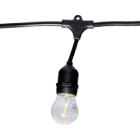 Bistro String Lights
Bistro String Lights Holiday Decorations
Holiday Decorations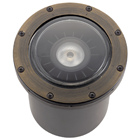 In-Ground Well Lights
In-Ground Well Lights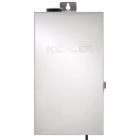 Transformers
Transformers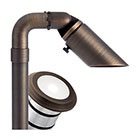 Accessories
Accessories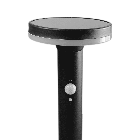 Solar Lights & Portables
Solar Lights & Portables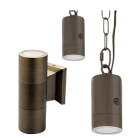 Specialty Lights
Specialty Lights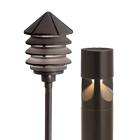 Bollard Lights
Bollard Lights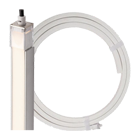 Tape Lights
Tape Lights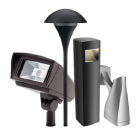 120V Landscape Lighting
120V Landscape Lighting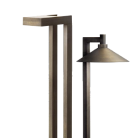 Dark Sky Approved Lights
Dark Sky Approved Lights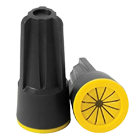 Connectors
Connectors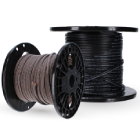 Wire & Cable
Wire & Cable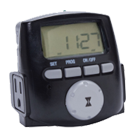 Timers & Control Devices
Timers & Control DevicesYou have no items in your shopping cart.
Always Here for You.
Lighting Warehouse offers direct support to customers. We always have your back.
Save More When You Become a Customer!
Lighting Warehouse offers support to customers at home.


October 27, 2024
Table of Contents: Best Light Bulbs for Outdoors
When it comes to lighting up your outdoor spaces, the type of bulb you choose can make all the difference. Whether you’re setting the mood with cozy string lights, spotlighting your favorite garden features, or making sure your pathways are safely lit, picking the best light bulb for outdoor light is key.
But with so many options—LED, CFL, Halogen, and good old Incandescent—it can be tough to know what’s best for your setup. Each of these outdoor bulb lights brings something different to the table, from energy efficiency to brightness and lifespan.
So, which are the best light bulbs for outside? Let’s break it down—here’s how to find the best light bulb for outdoor light.
First up, the modern marvel of landscape lighting! Let’s uncover why LED bulbs are a top choice for energy efficiency and long-lasting outdoor lighting.
LED (Light Emitting Diode) bulbs have revolutionized the lighting industry. One of the most notable advantages of LED bulbs is their energy efficiency.
LED bulbs use up to 80% less energy than traditional incandescent bulbs, making them an eco-friendly and cost-effective option for outdoor light bulbs. This translates to long-term savings on electricity bills, especially if your outdoor lights stay on for extended periods of time.
LED bulbs boast an impressive lifespan of up to 50,000 hours or more, far outlasting other outdoor bulb light types. This makes them ideal for outdoor lighting where bulb replacement can be challenging or inconvenient.
LED lights are also more durable and can withstand harsh weather conditions, vibrations, and impacts, which are common in outdoor settings.
In terms of light quality, LED bulbs offer a wide range of color temperatures. You can choose from warm white for a cozy, inviting glow to cool white for a bright, modern look.
LEDs are also available in various RGB options, allowing you to create dynamic, color-changing effects that can elevate the aesthetic appeal of your landscape lighting.
While LED bulbs are more expensive initially compared to other types of bulbs for outdoor lights, their long lifespan and energy savings make them the most cost-effective option over time.
You’ll pay more upfront, but you’ll recoup the cost in reduced energy consumption and fewer replacements.
LED bulbs are versatile and can be used for almost any landscape lighting need, including pathway lights, spotlights, flood lights, and decorative lighting.
Their ability to work with low-voltage systems makes them an excellent choice for those looking to reduce energy use while enhancing their outdoor space.
Next, we’ll talk about a slightly lesser-known option in terms of bulbs for outdoor lights. Let’s explore the pros and cons of CFL bulbs for your landscape lighting needs.
Compact Fluorescent Lamps (CFLs) are known for their energy efficiency, consuming about 60-80% less energy than incandescent bulbs.
While CFLs are more efficient than incandescent and halogen bulbs, they still don’t match the efficiency of LEDs. However, they offer a good middle ground for those looking to save energy without the higher upfront cost of LEDs.
CFL bulbs have a lifespan of around 8,000 to 10,000 hours, which is longer than incandescent and halogen bulbs but shorter than LEDs.
However, CFLs are more sensitive to extreme temperatures and frequent on/off cycling, making them less ideal for outdoor use where environmental factors could reduce their lifespan.
CFLs produce a softer, more diffuse light compared to LEDs and halogens. They are available in various color temperatures, from warm white to cool daylight, but they lack the wide range of customization that LEDs offer.
CFLs also take a few seconds to reach full brightness, which can be inconvenient in outdoor lighting settings where immediate illumination is needed.
CFLs are generally more affordable than LEDs but more expensive than incandescent bulbs.
They provide a decent balance between energy savings and upfront cost, making them a reasonable choice for budget-conscious homeowners looking for the best light bulbs for outside.
Due to their longer warm-up time and sensitivity to temperature, CFLs are less commonly used in landscape lighting.
However, they can still be effective for less demanding applications such as accent or decorative lighting, particularly in more temperate climates.
Halogen bulbs are a popular outdoor bulb light choice for a reason. Let’s dive into how halogen bulbs offer bright, clear light at an affordable price.
Halogen bulbs are a type of incandescent bulb that uses halogen gas to increase efficiency. They are about 30% more energy-efficient than traditional incandescent bulbs but still fall short compared to LEDs and CFLs.
Halogen bulbs use more power, which can lead to higher energy bills, especially if your outdoor lights are used frequently.
Halogen bulbs typically last between 2,000 to 4,000 hours, which is shorter than both LED and CFL bulbs. However, they are more durable than standard incandescent bulbs and can better handle outdoor conditions.
That said, they are still prone to burning out faster if exposed to moisture or extreme temperatures, making them less reliable for long-term outdoor use.
One of the biggest advantages of halogen bulbs is the quality of light they produce. Halogen lights emit a bright, crisp light that closely resembles natural daylight, making them ideal for highlighting landscaping features such as trees, statues, and fountains.
They are available in a variety of wattages but don’t offer as many color temperature options as LEDs.
Halogen bulbs are relatively inexpensive, making them a popular choice for those searching for the best light bulbs for outside that offer a bright, clear light without a large upfront investment.
However, their shorter lifespan and higher energy consumption can lead to higher long-term costs.
Halogen bulbs are often used in flood lights, spotlights, and accent lights in places where bright, focused illumination is needed.
Their crisp light makes them excellent for showcasing specific features in your landscape, but their energy consumption and shorter lifespan make them less ideal for general landscape lighting or pathway lighting.
The last bulb on the list of the best light bulbs for outside is incandescent bulbs, another popular option; however, they are becoming increasingly outdated.
Incandescent bulbs are the least energy-efficient option available, using significantly more electricity than LEDs, CFLs, or halogens.
They convert most of their energy into heat rather than light, which makes them less efficient and more expensive to operate in the long run.
Incandescent bulbs have the shortest lifespan of all the options, typically lasting only around 1,000 to 2,000 hours.
In an outdoor environment, their short lifespan can be particularly inconvenient, requiring frequent replacements. They are also less durable and more susceptible to damage from the elements.
Despite their inefficiency, incandescent bulbs produce a warm, familiar glow that many people find appealing. They don’t offer the same range of color temperatures as LEDs, but they provide a soft, inviting light that works well in certain landscape settings, such as garden paths or cozy seating areas.
Incandescent bulbs are the cheapest option upfront, which is why they remain popular despite their inefficiency. However, the higher long-term costs associated with energy use and frequent replacements often outweigh the initial savings.
Incandescent bulbs are best suited for decorative purposes, such as string lights or low-use areas where the light will not be left on for extended periods. Due to their inefficiency and short lifespan, they are not recommended for primary landscape lighting applications.
When choosing the best light bulbs for outside lights and landscaping options, it’s essential to weigh your priorities. Here is a quick comparison chart that summarizes the differences between cost and other variables for outdoor bulb lights.
| Bulb Type | Upfront Cost | Energy Efficiency | Lifespan | Long-Term Cost |
| LED Bulbs | High (but prices are dropping) | Most efficient (up to 80% less energy than incandescent) | 25,000 – 50,000 hours | Low long-term cost due to energy savings and rare replacements |
| CFL Bulbs | Moderate | Efficient (60-80% less energy than incandescent) | 8,000 – 10,000 hours | Moderate, with energy savings but shorter lifespan than LEDs |
| Halogen Bulbs | Low to Moderate | Less efficient (30% more efficient than incandescent) | 2,000 – 4,000 hours | Higher long-term cost due to shorter lifespan and higher energy use |
| Incandescent Bulbs | Low | Least efficient (uses the most energy) | 1,000 – 2,000 hours | Highest long-term cost due to frequent replacements and high energy use |
If energy efficiency, durability, and long-term savings are important to you, LED bulbs are the clear winner. They may cost more upfront but will save you money in the long run with their long lifespan and lower energy use.
If you’re looking for a balance between affordability and efficiency, CFL bulbs can be a good option for certain landscape applications, though they are not ideal for all outdoor conditions.
Halogen bulbs are a great choice if you need bright, focused light and don’t mind replacing bulbs more frequently. However, for general lighting, the higher energy consumption can be a drawback.
Finally, incandescent bulbs are best reserved for decorative purposes, as their high energy use and short lifespan make them less suitable for extensive or long-term outdoor lighting.
In most cases, LED bulbs offer the best combination of efficiency, lifespan, and light quality, making them the go-to option for modern landscape lighting.
If you’re having an outdoor party and want the best light bulbs for outside that won’t attract bugs, your best bet is LED bulbs – specifically warm white LED bulbs – because they emit little to no UV light and heat. In general, look for light bulbs that emit warm colors like yellow rather than cooler colors such as blue and white, which are more attractive to insects. Avoid using CFL and incandescent bulbs because they emit too much heat, another factor that attracts bugs.
If you’re considering purchasing an LED outdoor light, you may be wondering if it’s normal for LED lights to get hot. While outdoor LED bulbs do get warm when in use, they should never become excessively hot to the touch, and they do not get hot enough to set anything on fire. In fact, LED lights do not get as hot as traditional incandescent bulbs; this is due to modern LED technology, including features such as heat sinks, which dissipate heat and prevent components from overheating.
An important factor to consider when purchasing outdoor bulb lights is the light bulb color temperature. Specifically for outdoors, people often ask if soft white or daylight is the best light bulb color option. The answer depends on what purpose you are trying to serve. If you want to create a cozy ambiance on your backyard patio or deck, soft white would be the best choice, with its warm, inviting yellow glow. However, if you need to create a safe, high-visibility area for security purposes, you may want to opt for daylight, which provides a bright, white light with a higher color temperature (5000K – 6000K, compared to soft white’s 2700K – 3000K).
Join our Insider list and check out the different bulbs that we have to offer.
Sign up for exclusive offers and insight into what’s new for Lighting Warehouse. Elevate your outdoor lighting today!
By inputting your email, you agree to receive recurring promotional emails to which you may unsubscribe at your discretion.
Start Building Your Landscape Lighting System Today at Lighting Warehouse!
Monday - Friday

Speak to us at 855-444-8424